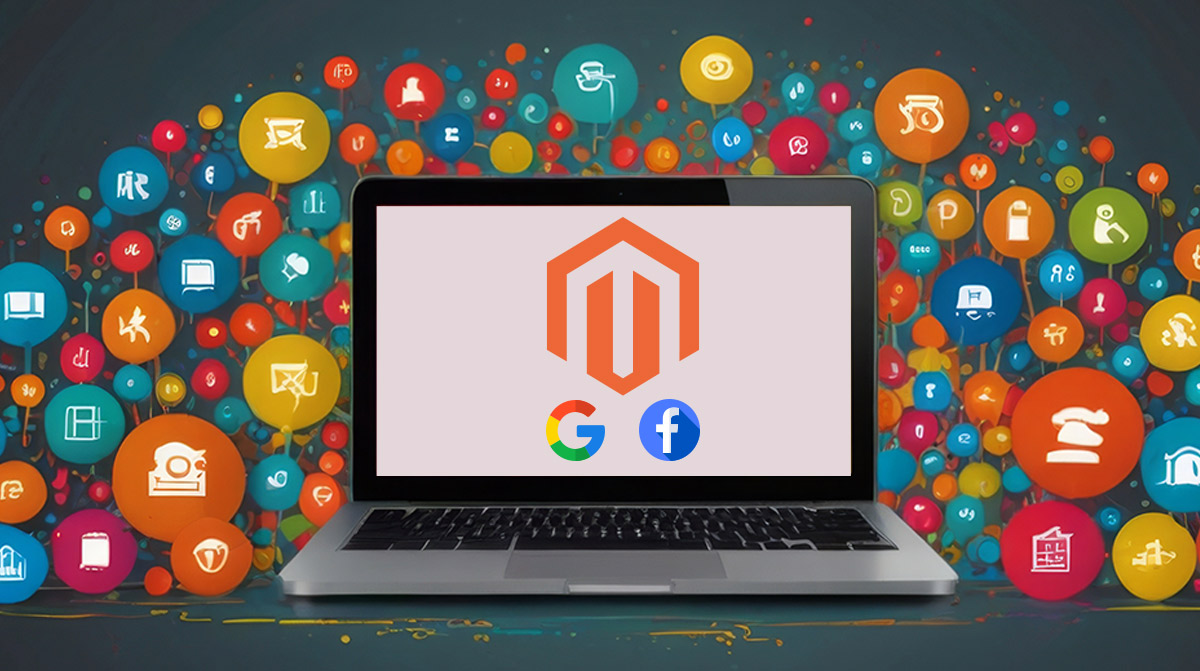The secret to unlocking the full potential of your online shop is customization. This will increase conversions, develop lasting relationships, and enhance adhesion by tailoring each consumer’s experience. Adobe Commerce is a strong eCommerce engine that can enable you to add elaborate personalization tools, which ensure that the messages, offerings, and products delivered are contextual. In this article, we’ll look at some of the advantages of personalization and how using Adobe Commerce can provide something different for customers every time. Get strategies and concepts that would help your business to grow to the next level and uncover opportunities for your web-based store.
What does it mean to personalize eCommerce?
The process of tailoring the shopping experience depending on the individual’s habits, interests, and previous choices of products made online is called eCommerce personalization. By using machine learning algorithms and data, eCommerce businesses can deliver customized content as product offerings, promotional messages to specific clients, and product recommendations.
Great personalization approaches can heighten client fidelity, thus contributing to improved conversion figures while raising the overall quality of the purchase process. Enterprises must gather customer information and then apply personalization technology before continuously adjusting their strategies in response to feedback from consumers through personalization.
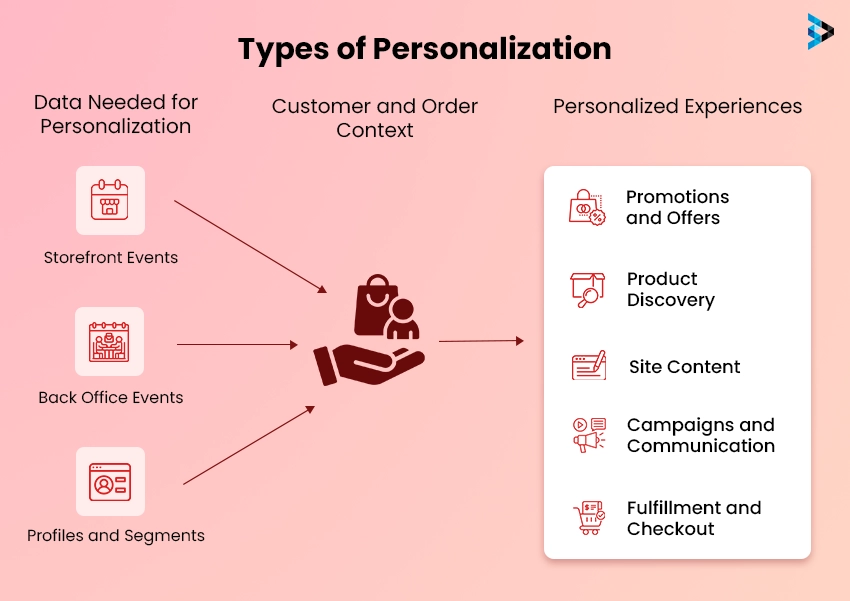
Why Should eCommerce Businesses Personalize?
Indeed, personalization stands as one of the most significant determinants in eCommerce that defines or predicts the success of a business. To prospective consumers, a company needs to create a good perception and make its customer experience unforgettable with that business and its products relative to other companies. This does not mean that today’s consumer doesn’t want the firm to individualize its offers, recommendations, or content that it delivers to the consumer across various consumer touch points.
Generic Experiences Kill Conversions
Generic experiences can be a total turnoff for customers. If a brand cannot identify and cater to individual preferences, this may result in declining engagement and, ultimately, revenue. Conversely, custom experiences can increase customers’ likelihood of converting by presenting relevant products and content that match their needs and interests.
The Effect of Customization
It has been found that consumer behavior is highly influenced by customization. For example, when brands offer personalized experiences about 80% more consumers are likely to make purchases (Press). This happens because customers respond well to personalized content which helps them feel valued and understood. Customers are thereby inclined to repeat their business with the same store, channel, or establishment again and again, hence the loyalty.
Advantages of Customization in Online Shopping
Email marketing is a different industry in which customization occurs. Findings suggest that personal campaigns have six times the conversion rate as compared to general email advertisements because emails which are specifically designed for each recipient are more likely to attract their attention and match their interests.
Creating a Personalized Customer Experience
Various tools and methods exist through which firms can create a personalized experience for their clients. Adobe Commerce Cloud, for example, provides companies with advanced personalization capabilities that enable them to tailor offers and content to individual customers. These types of tools help businesses achieve a sense of being treated individually by consumers, thereby making them feel understood and valued.
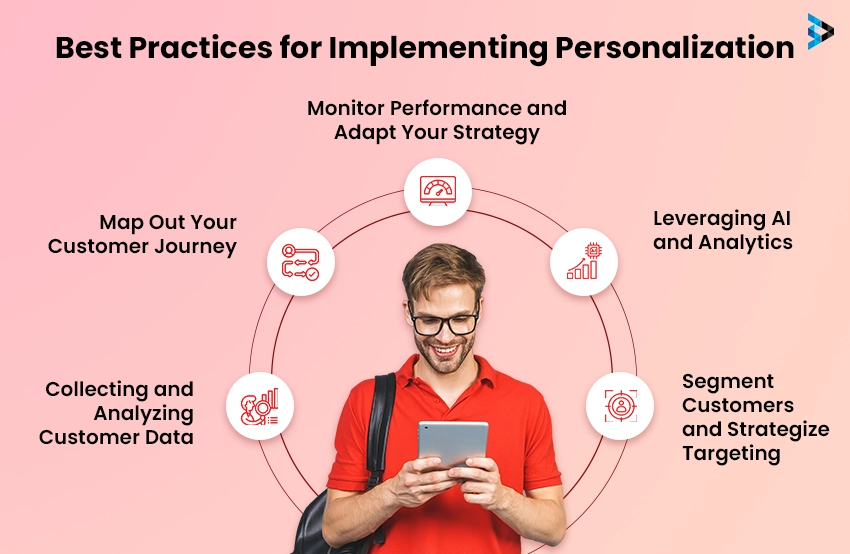
Best Practices for Implementing Personalization
Implementing these best practices would be vital for improving customer experience and increasing conversions in the eCommerce personalization field. By employing strategies such as targeted approaches, personalized messages, and abandonment campaigns, businesses can effectively engage customers and boost sales.
Map Out Your Customer Journey Pathways
Understanding the client journey is vital to successful personalization. By plotting different touchpoints and interactions, businesses can find meaningful opportunities to personalize solutions. This strategy increases the chances of conversion by customizing the offers and messages at each level.
Collecting and Analyzing Customer Data Responsibly
There must be ethical customer data collection and analysis for customization to succeed. Firms can develop comprehensive customer profiles because they use various sources of information such as previous purchases, online browsing patterns, and demographic details. This data underlies personalized recommendations and focused marketing strategies.
Segment Customers and Strategize Targeting
Segmentation is a key aspect of personalization, which entails grouping customers based on common features or activities they have carried out to support these initiatives. To segment their consumer base, businesses can customize their messaging and offerings for specific groups, thus improving relevance and engagement. When targeting is done strategically, personalized efforts are directed toward the right audience for maximum impact.
Leveraging AI and Analytics for More Accurate Personalization
Combining AI with analytical capabilities can lead to a better dynamic content customization system. These technologies allow huge amounts of data to be analyzed in real-time, so offers and messaging can be quickly changed depending on consumer behavior. Also, artificial intelligence, through predicting client wants, allows for the presentation of services and goods in a personalized way.
Monitor Performance and Adapt Your Strategy
To maintain a leading position in performance optimization, you must constantly assess your tailored efforts. Key performance metrics such as customer retention metrics, customer feedback, engagement levels, or conversion rates will enable businesses to gauge how effective their policies have been. Through data analysis, this approach enables quick adjustments and improvements that create better customer experiences.
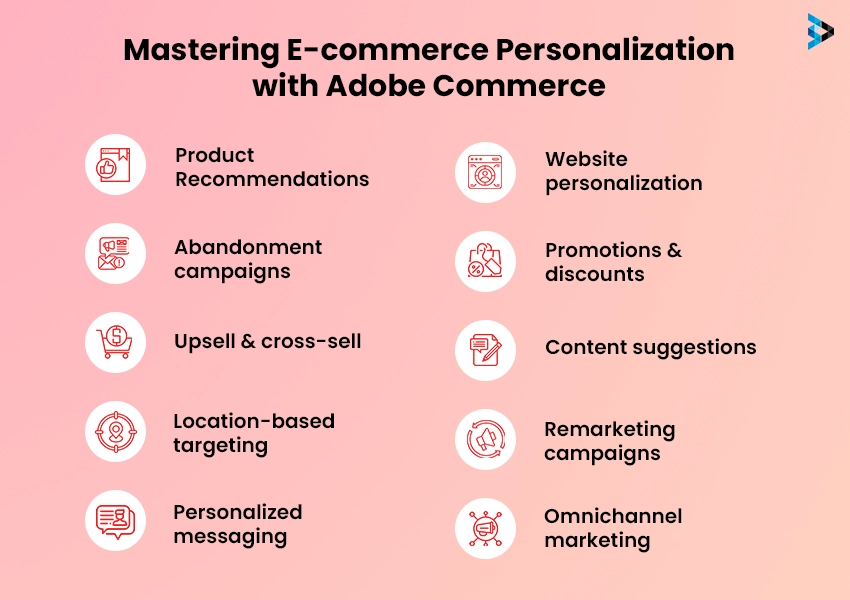
Mastering eCommerce Personalization with Adobe Commerce
eCommerce personalization has become the most powerful online retail method because it lets companies build one-to-one experiences that suit individual customers. Adobe Commerce is an ideal platform for learning eCommerce customization because of its rich feature set and robust toolset. Entrepreneurs must personalize and specific their approach to the target clients, as eCommerce should result in higher revenues and satisfaction, as well as long-term cooperation.
Product Recommendations
Target consumers are offered products and promotional information that engages them and encourages them to make purchases. Recommendations and targeted notifications are two of the major elements of eCommerce personalization, which are based on user data such as preferences, activities, and purchasing patterns.
Upsell & cross-sell
Adobe Commerce enhances the value of every business customer interaction with practical up-and-cross-sell approaches. Better quality or associated items can raise the average check and, therefore, sales figures within an enterprise.
Abandonment campaigns
Cart abandonment is a key problem in eCommerce that should be solved. Thanks to Adobe Commerce, companies can use abandonment campaigns to bring clients back to their carts, which will increase their conversion rates significantly.
Location-based targeting
Adobe Commerce is an electronic commerce platform that enables organizations to design specific contexts regarding the shopping experience based on the customers’ location. This allows localized content, promotions, and offers, making them relevant and increasing engagements. Consulting with an Adobe Experience Manager consultant can further enhance these capabilities, ensuring seamless content personalization and a more dynamic user experience. This leads to increased conversion rates and customer loyalty, thus making it a valuable tool for companies in the highly saturated online retail environment.
Personalized messaging
Companies use Adobe Commerce to send targeted messages as part of their customer relationship development plans. E-retailers can also use it to increase retention rates and brand loyalty. This allows for personalized messaging with each person, expanding the brand to the consumer contact points and consumers’ lifetime value.
Omnichannel marketing
Consequently, this is Adobe Commerce in the digital universe for a consistent customer experience across all channels. Hence, businesses using its omnichannel marketing capabilities can ensure an uninterrupted relationship with their consumers via several touch points.
Website personalization
Adobe Commerce in Adobe Experience Cloud has robust website personalization tools that allow companies to provide dynamic user experiences. This leads to increased involvement and conversion rates as organizations can generate tailored web experiences that address every unique visitor’s need, hence making their eCommerce strategies more effective than before.
Content suggestions
Considering a user’s preferences and conduct, Adobe B2B Commerce uses its potential to recommend personalized content. This enhances the shopping experience, increases conversion rates, and develops customer relationships. This individualized approach improves the whole buying process and increases sales and loyalty in the B2B eCommerce sector.
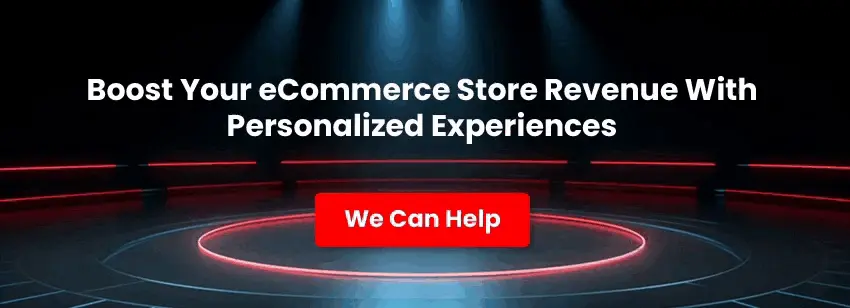
Promotions & discounts
Strategic promotions, including discounts, can help increase sales and maintain customer loyalty. Specialized tools for crafting personalized promotions targeted at distinct customer segments enhance the effectiveness of marketing strategies on the Adobe Commerce platform. Business organizations can employ Adobe Commerce’s capacity to tailor promotional activities that resonate with customers on a personal level, hence promoting engagement that encourages repeat purchases.
Remarketing campaigns
Remarketing campaigns through an eCommerce platform such as Adobe Commerce are effective in bringing potential buyers who do not purchase despite showing interest back to the website. The primary aim of this method is to boost conversion rates, increase sales, and generate profit. Additionally, the system has some advanced tools that help companies organize personalized, targeted promotions based on the customer’s browsing history and their interactions with company websites.
Tool
However, Adobe Commerce is a comprehensive eCommerce platform that utilizes sophisticated features contained in Adobe Sensei, Analytics, Target, and Real-time CDP, which are part of Adobe suite. These features allow the development of highly customized, valuable experiences to encourage customers’ repeat visits, increase conversion rates, and achieve tangible effects in the cutthroat world of Internet commerce.
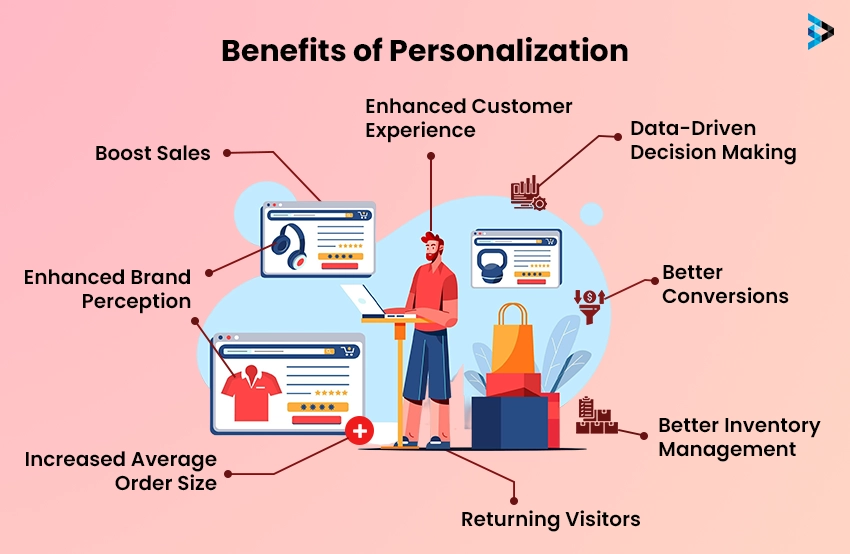
Benefits of Personalization
Customization is an effective tool that might change your company completely, resulting in substantial growth. In today’s crowded market, you can gain numerous benefits and compete effectively by adapting your marketing, products, or services to the specific needs and desires of each client. Below are eight advantages of personalization:
Boost Sales
Personalization can increase sales because it makes one feel valuable and understood. Thus, by making recommendations for products grounded on their browsing and purchasing history, you can signal your willingness to assist in finding the right items for them and also show that you know what they want. This helps build loyalty and trust, which are important in fostering conversions.
Returning Visitors
A dynamic website increases the return rate of visitors. In this case, though, you could still make each visit count by customizing content as well as offers that they see. Such recurring engagement is at the core of a successful eCommerce strategy, building customer loyalty and driving long-term business growth.
Better Conversions
Personalization leads to more visits that convert to sales when you showcase items that customers are most likely to buy. Consequently, simplifying purchase processes involves the elimination of irrelevant options while highlighting what suits them best.
Enhanced Customer Experience
Contemporary consumers need personalized services. They wish to be considered more than just a line in your database. To achieve this, you can customize your conversations to their demands and desires for better encounters that will make them come back again and again.
Better Inventory Management
Through customization, you understand what a customer wants to buy. You can look at their browsing history and purchasing data to identify patterns and adjust your inventory accordingly. This reduces waste while increasing profit by stocking the correct amount of the right products.
Enhanced Brand Perception
Strengthening the customer-centric and innovative aspects of your brand identity is possible if you provide an experience that every channel is tailored towards consistently. Consequently, customers are more likely to trust and engage with such a brand, hence increasing sales revenue and promoting loyalty to the brand.
Data-Driven Decision Making
The collection of data from your personalization efforts yields diverse information about your customers’ preferences and activities. By examining this information, one can decide wisely on product development, marketing strategies, and business operations, among other things. Thus, staying adaptive and responsive in the face of changing market conditions requires employing a data-driven approach in such circumstances.
Increased Average Order Size
The concept of personalization results in increased average order value as it guides the customer to find related products and complements. Perhaps you can persuade them to spend more on the things they buy every time by recommending those that complement the ones they have at home. This additional source of income can greatly and swiftly affect your bottom line.
Call to Action
Include an Adobe Commerce partner to consult on Adobe products to utilize customer information and customers’ journey analytics to boost business outcomes. Since we are experienced in creating Adobe Commerce applications, you can fluently integrate Adobe into your business operations, enhance your customization strategies, and achieve maximum results. Let us know if you require our assistance with Adobe for your business, talk to us!
FAQs
Entrepreneurs must personalize and specific their approach to the target clients, as eCommerce should result in higher revenues and satisfaction, as well as long-term cooperation.
eCommerce businesses gain a lot from this, including, but not limited to, higher conversion rates, improved client satisfaction metrics, increased traffic to their websites, larger average orders, and an inclination for repeat business.
Adobe Commerce contributes significantly to the creation of personalized experiences by enhancing customer satisfaction, loyalty, and user engagement by providing companies with tools and techniques that enable them to customize their interactions with customers.
Obviously, customizing with Adobe Commerce is suitable for any company size because it offers expandable solutions designed for any specific requirements of particular types of businesses ranging from start-ups to giant corporations.
Some practices related to personalization through Adobe Commerce include using heat maps and session replay tools, creating segments within your customer base, getting direct feedback from them, developing personalized campaigns based on focused promotions, and collecting and analyzing consumer data.
In Adobe Commerce, users can set up customer-centric objectives, see where personalization can happen, define what information they need, and see where in the customer journey micro-moments of personalization are possible.
The implementation of personalization in eCommerce supports a continuous increase in interaction quality, satisfaction, and loyalty among customers, improved conversion, and a competitive advantage for businesses.
Related Articles
-
Smart Ways to Generate Google or Facebook Product Feed in Magento 2
A product data feed or product feed is a comprehensive product list document that consists of all product details. These details are inclusive of product prices, images, categories, and other
-
Cyber-Security Is Essential for Online Business
You never know what’s coming for you and your business, now, you have the time to increase the Cybersecurity and protect your business. Protect your ecommerce and customers, and their
-
How Retail Businesses Use AEM for eCommerce and Customer Engagement
Summary: It’s 2024; your online business needs more than a working website to stand among your competitors. Besides, your ideal clients won’t waste time around slow-loading websites to complete their


